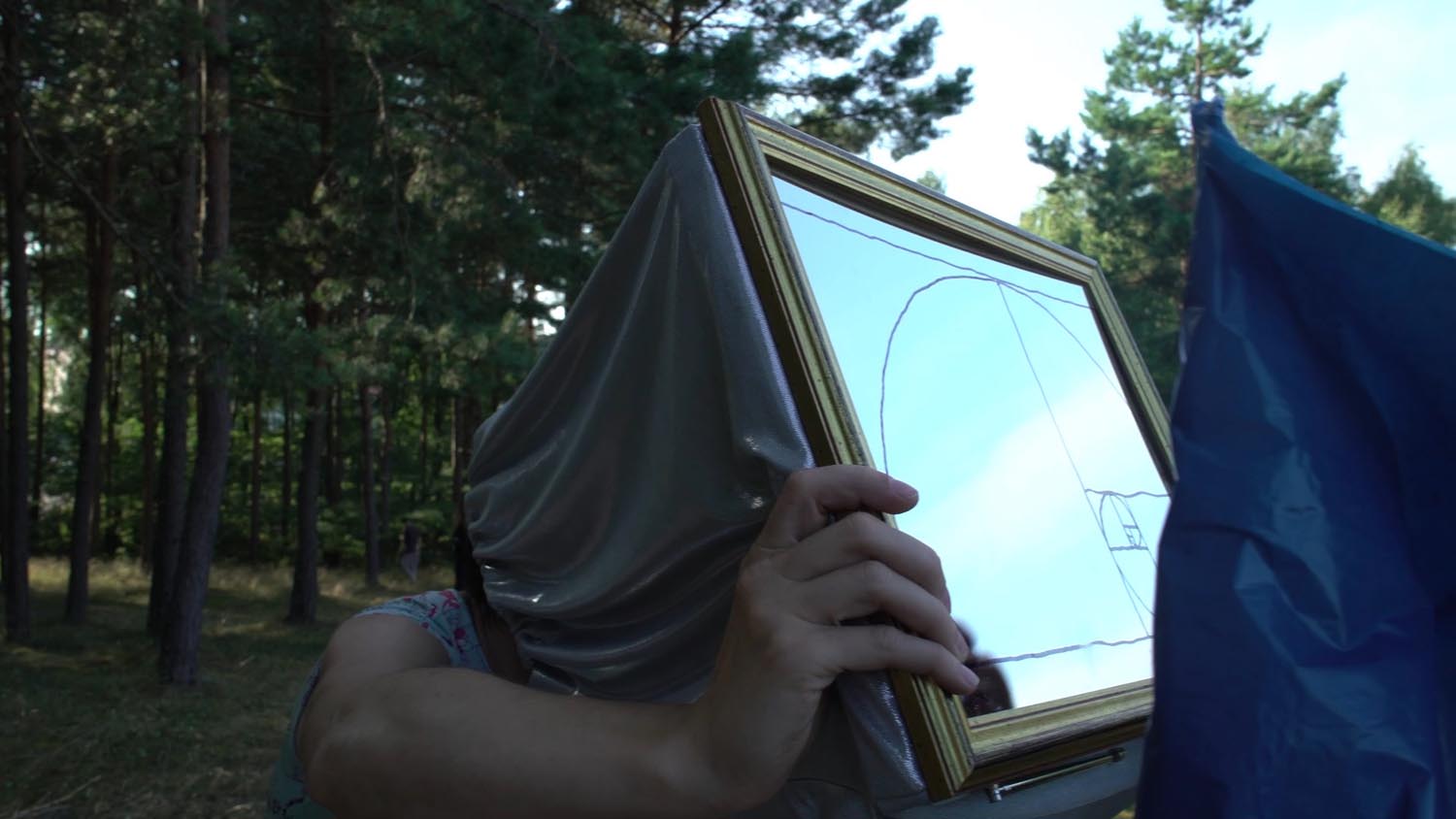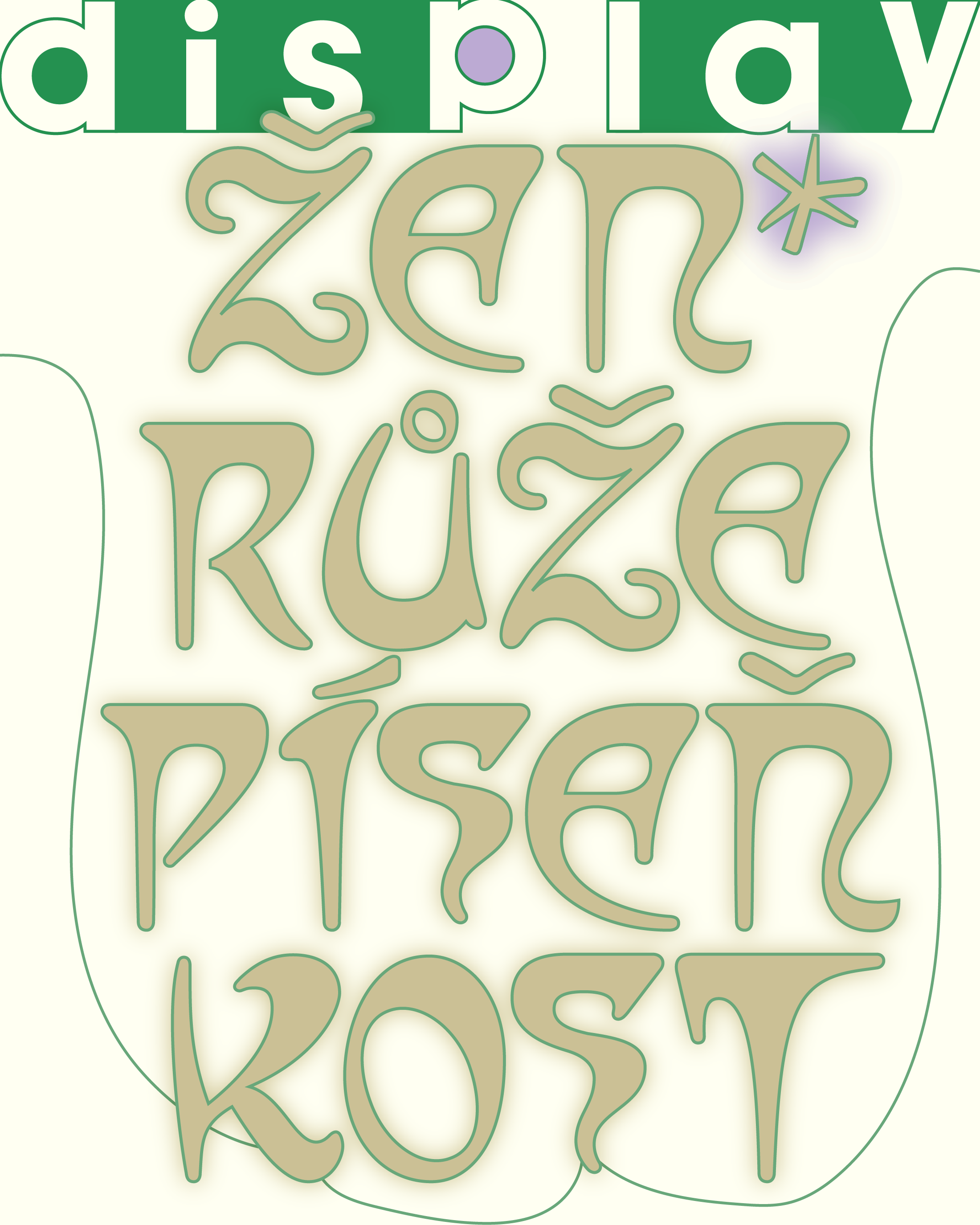Wom*n – Rose – Song – Bone
Can plants feel pleasure and pain? Thinking beyond flowers as decoration or ornament, this exhibition reflects on the complex relationship between the eroticism of plants, botany and the body. Plants’ sexuality stands, like queer and trans bodies, in opposition to modernity's orderly impulses. Using poetic technologies – sound based works, drawing, moving image and sculpture – this exhibition will make you see, hear and feel plants from an intergenerational and multispecies position.
Vegetal forms morph into organs and sealife, cells and petals anthropomorphise, only to collapse, swirl and twist in the visceral, highly charged drawings of Czech artist Anna Zemánková. Driven by an embodied drawing practice, meticulous yet at the same time expansive, her fantastical flora equally adore and dismantle ornament and botanical drawings. Plants are rendered curative and libidinal, but also mind-altering and ambivalent, morphing between human and non-human form. Boundaries dissolve, feelings and bodies don’t fit the norm. What can we find in the spaces between classifications – be it Linneaus’ botany or norms of language – and can we find such spaces in our daily routines, habits and grammar?
Sin Wai Kin (fka Victoria Sin)’s speculative science fiction story And at the pinnacle, the foot of a mountain invites us into a world where we are seduced by giant orchids to become part of their reproductive cycle. For Sin, who is concerned with the rewriting of patriarchal and colonial narratives naturalised by scientific discourses, the reference to the orchid is by no means accidental. Exotic flowers such orchids were introduced to botanical gardens founded in the second half of the nineteenth century, feeding the obsession of the fin-de-siècle period with the decorative but also functioning as a symbol of the ‘exotic’. In Georges Bataille’s 1933 essay The Language of Flowers, orchids are theorised as obscene for their exposed sexual organs and polymorphous sexuality. In this contexts, flowers defy moral standards of heterosexuality and were associated by Bataille and his contemporaries with perversity (such as non-reproductive homosexual sex). Such a connection – discussed recently by feminist, queer and trans theorists including Caspar Heinemann in his essay Fucking Pansies: Queer Poetics, Plant Reproduction, Plant Poetics, Queer Reproduction – is further accerelated by notions of the uncontrollability and wildness of vegetal growth.
In Wild Things: The Disorder of Desire, Jack Halberstam offers an alternative history of sexuality by tracing the ways in which the wildness has been associated with queerness and queer bodies. Halberstam theorizes the wild as an unbounded and unpredictable space that offers sources of opposition to modernity's orderly impulses. Wildness illuminates the normative taxonomies of sexuality against which, for Halberstam, radical queer practice and politics operate. Here, like for Sin Wai Kin, the speculative retelling of the natural world also gives space to multiplicity and marginalised experience. Through the rest of the show interactions between the botanical and human world allow for such wildness to emerge.
Can there be a firm separation of waking from sleep, pleasure from pain, memory from its loss, conscious and reflective from instinctive artmaking, the self from the rest of the world? In her research, commissioned for this project, Marie Tučková worked with Zemánková’s process working early morning from 3AM - the witching hour – the time when the world is sleeping and the mind is defocused and still half asleep – in her daily routine for two months, exploring embodied responses that rewire set ways of working, such as writing her lyrics with her left hand. The resulting soundscapes, Before Day-is-moon-lit, are written in such moments, allowing half forgotten ideas, images and sounds to come to the fore.
How does memory inscribe in the body? Can we think about non-human memory, pleasure and pain being inscribed in human bodies, and vice versa? How does our interaction with the more-than-human world – such as plants or machines – inscribe in our consciousness? Such questions are developed in the new audio commission Falling Asleep, One Version From Many by Lucie Rosenfeldová, drawing on the medically induced amnesia that she experienced after a gynecological surgery, such inscription is poetic as much as it is an encounter with the medical gaze and patriarchal systems of knowledge.
The large scale papier mache objects of Ruta Putramentainte, closely resembling geological forms, insects nests, horns and bones, play with formal, sculptural properties such as weight and scale, worked through their ambivalent materiality. Attached to the institutional walls, they interrogate its structure, resembling casts from man made building materials interlayered with strips of meat and bone, their cavities recalling interiority of the body. Ruta’s algorithmically adjusted insect soundscapes vibrate and spill out around Špela Petrič’s Phytocracy Tools, a series of performative objects resembling artists tools presented alongside a recording of the performance in the woods, designed for sensitization of our perception of the natural world. How is our sensitivity towards nature navigated in our algorithmically modified experience and can this sensitivity be in any way reciprocated?
Alžběta Krňanská’s concern with interrogating the ornament explores it as an penetrable boundary between public and private, external and internal spaces of the body. Painted with natural dyes, the paintings are used as performative tools that adorn the artist’s online identity on the platform OnlyFans. Explicit and intimate at the same time, in Krňanská’s paintings the ornament is dismantled by a wild, unruly vegetal growth. .
And finally, if we can eat plants, why not make love to them? In Zheng Bo’s series Pteridophilia, bird’s nest fern, a well known delicacy in Taiwan, is adored by a group of gay men out in the tropical forest. Leaving aside the question of botanical consent, the professed pleasure of the participants is given a different layer of meaning of the sociopolitical meaning - while the fern is considered a delicacy by indigenous people of Taiwan, other inhabitants and neighbouring nations refuse to eat it.



















